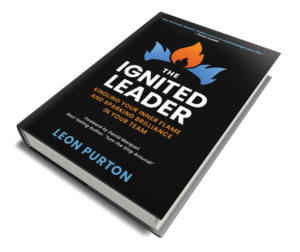How an engineer chooses between jobs

I’ve recently discussed some of the things I used to help me choose between two very good job options. I realised that conversations and gut-feel were not going to be enough. There needed some evidence to support a decision, so I turned to Excel and geeked up my pros and cons list.
Previously, I’ve talked about reframing big decisions and how it helped take the stress away. I also talked about the importance of a Personal Advisory Board and why you should have one, noting how mine helped me make this decision.
The final thing I did in making my decision was to geek up a pros and cons list to provide some evidence on which job was a better fit.
Did it help, absolutely. Did I over-engineer it, probably.
Pros and Cons lists
Many people have heard of using a Pros and Cons list to aid in decision making. Listing these is an attempt to provide some impartiality to a decision. More often than not though, these lists still suffer from bias.
This Harvard Business Review article describes the pros and cons — of pros and cons lists! In it, they describe the pros as increasing the rigour, creating some emotional distance and note that there are some familiarity and simplicity to the tool. The cons are that the tool is vulnerable to cognitive biases and reliant on clear analytical thinking.
I have used pros and cons lists for house purchasing, living locations and for buying a car. It has been useful for taking some emotion out of decisions and if you are in a partnership/relationship, you can use it as a tool to identify the other person’s priorities and compare them with your own.
A pros and cons list for determining future employment might look like this;

Using this tool can help you understand some of the strengths and weaknesses of each potential employer, but it doesn’t really provide you with an answer. You cannot look at these tables and choose one over the other. For this reason, the pros and cons list isn’t that useful. This is where a weighted scoring assessment can help. This is the geeky pros and cons list.

Weighted Score Assessment
How do you geek up a pros and cons list? You add in some scoring and percentages then wrap it all up in a formula!
Each of your options is scored against the criteria you develop and then prioritised. For instance, if you were buying a TV you might use criteria like;
- Screen size, Picture definition, Applications, Sound Quality, and Cost.
These criteria are then prioritised and rated. I chose screen size as my most important, then cost, then definition, then sound quality and in truth — I don’t really care about the applications. I weighted the scoring to prioritise those attributes when comparing the three TVs.
The final score is the addition of the amount you have given, reduced by the percentage you have weighted it — ideally these percentages sum to 100%. For example, the score of 10 for screen size only carries 40% of this to the final score (4). Cost — 30%, Definition — 20% and Sound — 10%.

Does this make sense? Now, rather than a Pros and Cons list, I have a number to compare the options. This would help me decide which TV to choose at this time.

Choosing a Job Criteria
So what do you prioritise when selecting a job? When choosing a TV there are a lot of definable attributes when choosing an Employer and Job, most of them are intangible.
In the end, I put down 23 different criteria (yeah, that is a lot) to assess the options, and because of this number, I couldn’t apply the same percentage algorithm (where they sum to 100%). Instead, I went through and prioritised these in the same way but scaled each attribute out of 100%. i.e. If it was important to me it got 100% weighting, I then reduced the criteria down with the least important aspect only contributing 40% of its score.
I then hid the weightings (to remove subconscious bias to those weighted more heavily) and went through and scored each of the 23 criteria out of 10 for each job options and wrote a word picture to support the score. This might be hard to follow — I’ll expand below.
Here are the criteria I used in this decision — these were derived from my experience, some input from my personal advisory board, and some of the measurable items;
Technical engagement, leadership development scope, personal engagement opportunities, job potential, ability to learn from other exceptional people, income opportunity, performance bonus, growth opportunity, honing speaking skills, location, employee engagement terms, stability, high performing team probability, flexibility, alignment with passions, alignment with values, organisational drive and goals, CV reputation and personal health.
Of these criteria, I weighted strongest; leadership development, exceptional people, flexibility, income and alignment with passions.
Conducting the assessment
After hiding the weighting column, to remove some bias, I went through and wrote my score out of 10 and a supporting word picture. Here’s an example;

With a weighting of 100% for this aspect, the total amount was added to the final score. I completed this assessment for each of the criteria.
Then I did something slightly unusual
I hid my scores and got someone else to read my word picture and score according to what I had written. Why did I do this?
It was an attempt to remove some of my cognitive biases.
I got someone I trust, someone I know has my best interests at heart, and also does not know either of the employers or the jobs to score them as well. I got my partner to score my criteria based on the word picture alone.
We came out with slightly different totals for the two employers but we both gave the same employer the highest score. In each assessment, Employer 1 received a higher total score. For interest, my assessment is score 1 and my partners in score 2.

This piece of information, supported by conversations with my Personal Advisory Board, led me to accept a job offer from Employer 1.
Now, this process might not be for everyone, but for those of you who would like to know that there are some valid reasons for choosing one option over another. A weighted score assessment may help you make that decision.
It certainly helped me.
Most important to this decision though was the compounding information from my Personal Advisory Board, my assessment of the criteria, and my partners supporting assessment.
For this reason, I have confidence that I am making a good decision.
I am a writer with a passion for leadership, growth and personal development. I try and create a spark, a little idea that nests inside and kindles your aspirations.
How to take the Stress out of Your Decision
Why it isn’t the Right versus Wrong choicemedium.com
